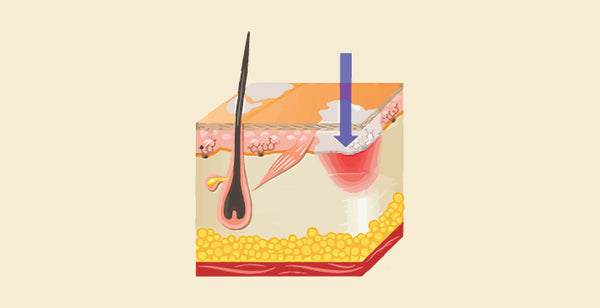Difference between Excimer Laser vs UVB for Vitiligo: Excimer Laser and UVB phototherapy are both effective treatments for vitiligo. Vitiligo is a condition characterized by patches of depigmented skin. The Excimer Laser delivers targeted UVB light to affected areas, stimulating melanocytes to produce melanin and encouraging repigmentation. Its precise nature makes it suitable for localized patches. Conversely, UVB phototherapy exposes broader areas to UVB light, requiring longer sessions and potentially more frequent treatments.
Difference between Excimer Laser and UVB
Excimer Laser delivers targeted UVB light for localized vitiligo patches, while UVB phototherapy treats areas that are broader and would also require more frequent sessions. The table below provides the differences between Excimer Laser and UVB.
|
Aspect |
Excimer Laser |
UVB Phototherapy |
|
Mechanism |
Delivers targeted UVB light to specific areas |
Exposes broader areas to UVB light |
|
Treatment Area |
Suitable for localized patches |
Treats broader areas of the body |
|
Intensity |
Precisely adjustable intensity |
Generally lower intensity |
|
Treatment Schedule |
Shorter sessions, fewer may be needed |
Longer sessions, potentially more frequent |
|
Side Effects |
Milder due to the targeted nature |
May include sunburn-like reactions and itching |
|
Cost/Accessibility |
More expensive, less widely available |
More accessible, potentially less expensive |
Browse The Best Scrubs Collection!
What is an Excimer Laser?
Excimer Laser treatment for vitiligo involves the usage of a special medical laser that produces a specific wavelength of ultraviolet (UV) light, usually 308 nanometers. This treatment is particularly targeted towards depigmented patches of skin characteristic of vitiligo.
Features of Excimer Laser
- Monochromatic Light: Excimer Lasers produce a narrow-band ultraviolet (UV) light with a single wavelength, typically in the range of 193 to 351 nanometers. This monochromatic nature allows for correct targeting and manipulation of tissues.
- Short Pulse Duration: Excimer Lasers produce extremely short pulses of light that range from a nanosecond. This rapid pulse duration makes it easier to precisely target the tissue treatment and simultaneously minimizes heat damage to surrounding areas.
- High Energy Density: These lasers generate high-energy pulses, which allow proper removal of material removal or photochemical reactions. This feature is particularly useful in applications such as micromachining, photolithography, and medical procedures like corneal reshaping and skin treatments.
- Gas Discharge Medium: Excimer Lasers utilize a mixture of gas, typically composed of noble gases and a halogen, as the active medium. The mixture of gas undergoes an electrical discharge, resulting in the formation of excited dimers, excimers which produce laser light upon relaxation.
- UV Range: Excimer Lasers primarily emit UV light, which has unique properties which are very useful for various applications. UV wavelengths are often employed in processes like photochemical reactions, material ablation, and sterilization due to their high energy and ability to interact with molecular bonds.
What is UVB?
UVB (Ultraviolet B) phototherapy can be defined as a treatment which is used for various skin conditions, including vitiligo. UVB phototherapy involves exposing the skin to UVB light, which can help in repigmentation of the skin affected by vitiligo by stimulating melanocytes, the cells responsible for producing melanin, the pigment that gives skin its colour.
Features of UVB
- Wavelength Range: UVB radiation lies between the range of 280 to 315 nanometers on the electromagnetic spectrum.
- Penetration Depth: UVB radiation has a limited penetration depth in the skin. It primarily affects the outer layer (epidermis) rather than the deeper layers.
- Role in Vitamin D Synthesis: UVB radiation is essential for the synthesis of vitamin D in the skin. When the skin is exposed to UVB rays, a precursor molecule in the skin converts to vitamin D, which is then metabolized by the body.
- Effects on Skin: UVB radiation is responsible for causing sunburn, tanning, and skin damage. Prolonged or excessive exposure to UVB rays can lead to various skin disorders, including premature ageing and an increased risk of skin cancer.
- Stimulates Melanin Production: UVB radiation stimulates the production of melanin, the pigment responsible for skin colouration. This is why exposure to UVB light can lead to tanning as the skin produces more melanin in response to UV exposure.
Shop Best Lab Coats From Here!
Similarities between Excimer Laser and UVB
- Targeted Light Therapy: Both Excimer Laser therapy and UVB phototherapy produce light energy to the skin. However, the Excimer Laser produces a highly focused beam of UVB light, on the other hand, UVB phototherapy involves more exposure to UVB light from lamps.
- Treatment of Skin Conditions: Both are used to treat certain skin conditions, including psoriasis, vitiligo, eczema, and some forms of dermatitis. They are particularly effective in cases where these conditions affect localized areas of the skin.
- Stimulate Melanocyte Activity: Both Excimer Laser therapy and UVB phototherapy can stimulate melanocyte activity in the skin. This stimulation can lead to repigmentation in conditions such as vitiligo, where there is a loss of skin pigment.
In summary, Excimer Laser and UVB phototherapy are effective treatments for vitiligo but differ in terms of treatment area, intensity, side effects, and accessibility. The choice between the two depends on factors such as the extent of vitiligo, the location of the affected areas, patient preferences, and the availability of treatment options.
Order the Best Jogger Scrub From Here!
| Check out More Articles | |
| Difference Between Cartilage And Bone | |
| Difference Between Endocrine And Exocrine Glands | |
| Difference Between Cell Wall And Cell Membrane | |















